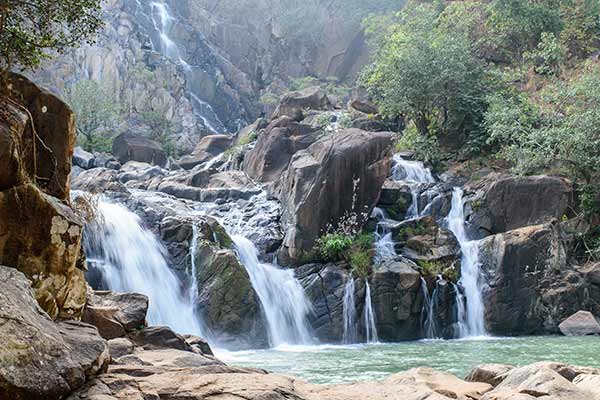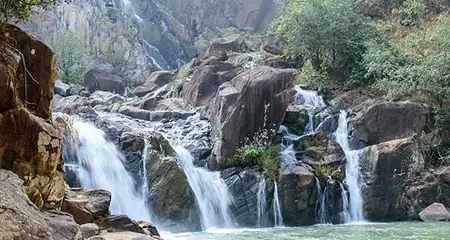Located in the eastern part of India, Jharkhand is blessed with lush green forests, lofty hills, sparkling waterfalls, several wildlife sanctuaries, and a treasure trove of mineral reserves. It has many revered places of worship too, which make it an attractive destination for not just tourists but pilgrims as well.
While the mining of natural resources is the backbone of Jharkhand’s economy, the tourism sector also plays a remarkable role in its economic growth. According to the Indian Brand Equity Foundation, 33.56 million tourists visited the state in the year 2016. From premier hotels to budget properties, you can find all kinds of accommodation options in Jharkhand.
Jharkhand Tourism Information
| Capital | Ranchi |
| Official Language | Hindi |
| Area | 79,714 square kilometer |
| Main Cities | Jamshedpur, Dhanbad, Ranchi, Deoghar, Bokaro Steel City, Hazaribagh, Giridih, and Ramgarh |
| Status | State |
| Official Tourism Website | http://jharkhandtourism.gov.in/ |
| Major Railheads | Dhanbad Junction, Ranchi railway station, Bokaro Steel City railway station, and Tatanagar Junction (Jamshedpur) |
| Airport | Birsa Munda Airport (Ranchi) |
History of Jharkhand
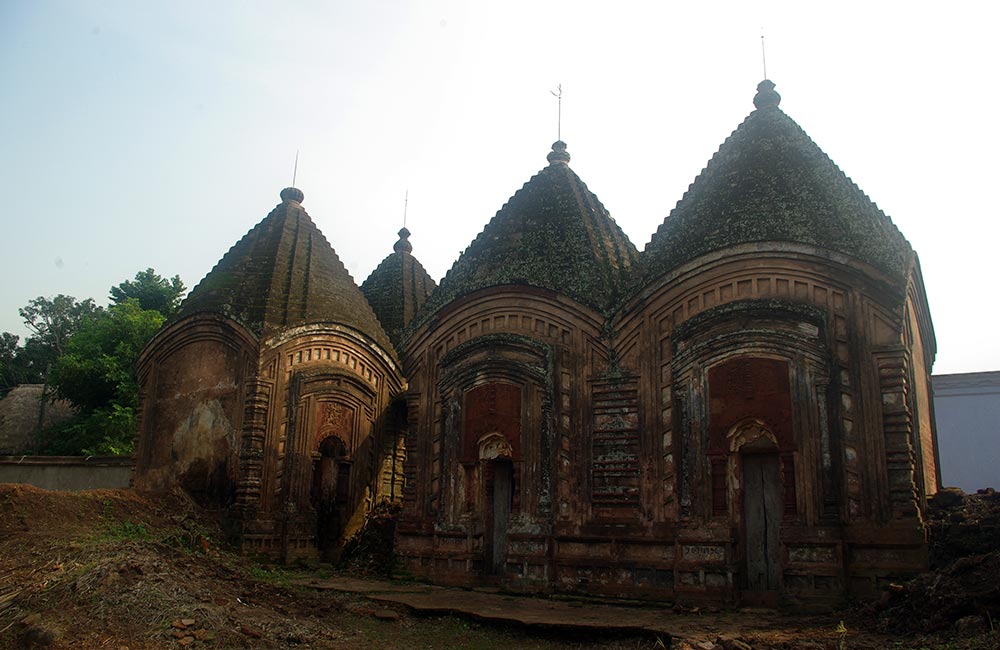
History of Jharkhand | Jharkhand Tourism
Ancient cave paintings, tools and other archaeological evidence found in different parts of present-day Jharkhand indicate that the region has been supporting human habitation since the Stone Age. In time, it was ruled by many dynasties including the Mauryas, Guptas, Palas, Cheros, Nagvanshis, and Gaudas, albeit for short durations. In the 16th century, the Mughals took control over the region, followed by the British East India Company, which established its dominion here in the 18th century, and carried out rampant exploitation of the area and its resources. It remained a part of the Bihar province during the British rule and Bihar state after India attained independence. Much later, in the year 2000, southern Bihar was carved out as a separate state, which came to be known as Jharkhand.
Geography & Climate
Jharkhand lies on the Chota Nagpur Plateau, one of the earliest land formations on earth. It is enclosed by the states of Uttar Pradesh and Chhattisgarh on the west, West Bengal on the eastern side, Bihar towards the north, and Odisha in the south. Several hill ranges adorn the state, including Parasnath Hill, Rajmahal Hills, Trikut Hills, and Tagore Hill. Among the major rivers flowing through the state are Son, Subarnarekha, Damodar, Sankh, South Koel, North Koel, Lilajan, and Mayurakshi.
While the state experiences humid subtropical climatic conditions in the north, the south-eastern parts undergo tropical wet and dry climate. With summers being hot and humid in Jharkhand, planning a visit during March-June is not a great idea. The best time to visit Jharkhand is from October to February when the climatic conditions are ideal for sightseeing and outdoor activities.
Places to Visit in Jharkhand
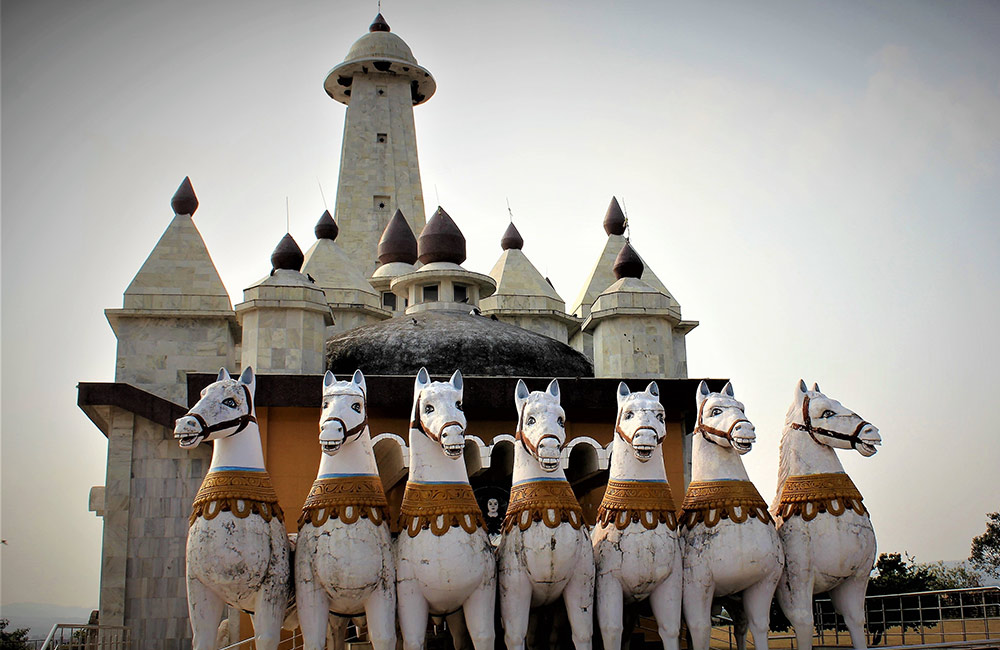
Places to Visit in Jharkhand | Jharkhand Tourism
- Temples: Baidyanath Jyotirlinga Temple, Shikharji Jain Temple, Chhinnamasta Temple, Jagannath Temple, Sun Temple, Bhuvaneshwari Temple, Deori Temple, Maluti Temples, and Naulakha Mandir
- Waterfalls: Dassam Falls, Jonha Falls, Hundru Falls, Panchghagh Falls, Hirni Falls, Lodh Falls, Sadni Falls, Lower Ghaghri Falls, and Usri Falls
- Wildlife Sanctuaries and National Parks: Dalma Wildlife Sanctuary and Betla National Park
- Dams and Reservoirs: Kanke Dam, Maithon Dam, Getalsud Dam, and Khandoli Dam
- Lakes: Hazaribagh Lake, Ranchi Lake, Jubilee Lake, Hudco Lake, and Dimna Lake
- Museums: State Museum Hotwar, Tribal Research Institute Museum, Ranchi Science Centre, and Sanskriti Museum & Art Gallery
- Other Attractions: Rock Garden, Nakshatra Van, Birsa Zoological Park, Muta Crocodile Breeding Centre, and Palamu Forts
Cuisine of Jharkhand
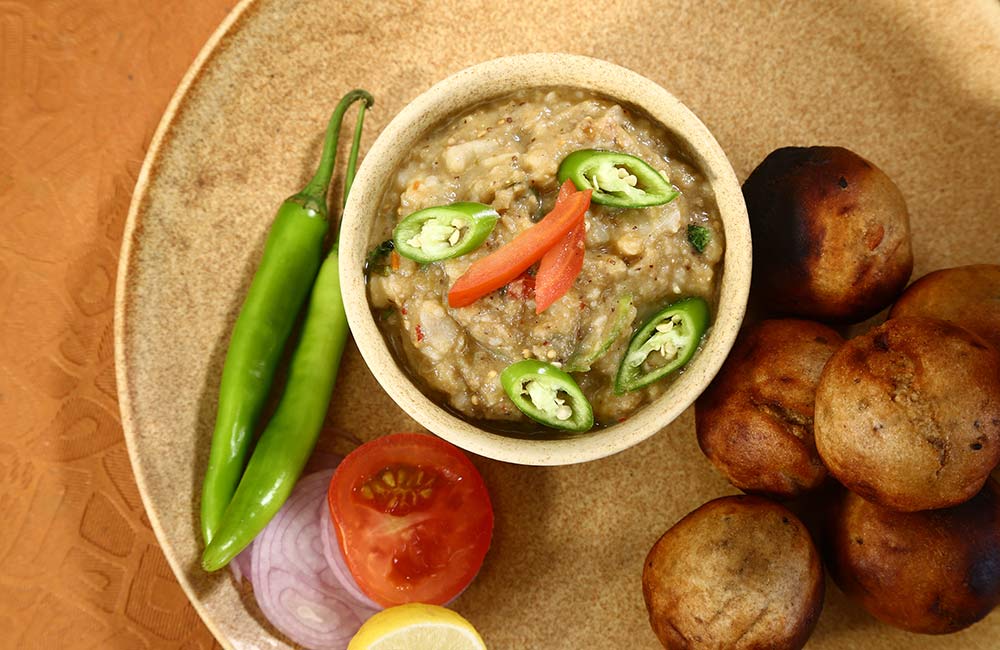
Cuisine of Jharkhand | Jharkhand Tourism
Jharkhand cuisine comprises of an exotic variety of dishes. A basic meal includes rice, lentils, tubers, and vegetables; spices and oil are not used much in the preparation of these dishes. You can enjoy the authentic taste of Jharkhand cuisine at the local villages since restaurants usually do not offer traditional delicacies. Some of the must-try items of this cuisine include Chilka Roti, Bamboo Shoots, Aaru ki Sabzi, Litti Chokha, Meat Salan, Dhuska, Mahua Masala, and Pitha. Among the popular sweet dishes available across the state are Arsa Roti, Malpua, Thekua, Dudhori, and Mitha Khaja, to name a few.
Shopping in Jharkhand
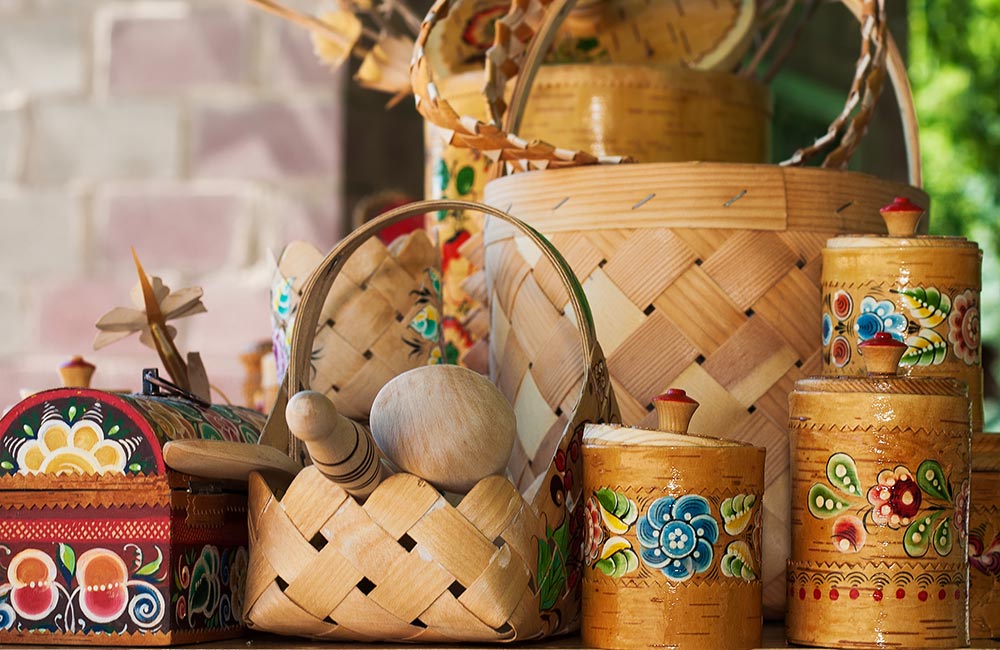
Shopping in Jharkhand | Jharkhand Tourism
Shopping destinations in Jharkhand include shopping malls, local marketplaces, government emporiums, and stand-alone stores. Some of the exceptional things to buy from Jharkhand are:
- Tribal handicrafts
- Paitkar paintings
- Stone carvings
- Woodcraft
- Bamboo work
- Metal and ornament work
Things to Do in Jharkhand
- Go for an adventure-filled flight at Jharkhand Flying Institute (Gliding)
- Experience some thrilling moments on the Ropeway at Trikut Hills – India’s highest vertical ropeway
- Enjoy watersports in Giridih
- Indulge in the exhilarating aero-sport, parasailing, in Giridih
- Visit some of the famous temples of Jharkhand
- Spot rich flora and fauna at the wildlife sanctuaries
- Spot the exact place where the Tropic of Cancer passes through Jharkhand
- Enjoy a hot water bath at Tattapani Hot Water Spring
- Sample the street foods of Jharkhand
- Enjoy a drive to Patratu Valley
How to Reach Jharkhand
 By Air: The airport in Ranchi is the only functional airport serving the state. This domestic airport has regular flights that connect it to various other metros and major cities of the country, such as Delhi, Mumbai, Kolkata, Bangalore, Hyderabad, Patna, etc.
By Air: The airport in Ranchi is the only functional airport serving the state. This domestic airport has regular flights that connect it to various other metros and major cities of the country, such as Delhi, Mumbai, Kolkata, Bangalore, Hyderabad, Patna, etc.
 By Rail: Jharkhand has quite a few railway stations that link the state to different corners of India. The major railway heads in Jharkhand are in Ranchi, Dhanbad, Bokaro Steel City, and Jamshedpur. Premium trains like Rajdhani Express and fast passenger trains including Jan Shatabdi Express serve the state.
By Rail: Jharkhand has quite a few railway stations that link the state to different corners of India. The major railway heads in Jharkhand are in Ranchi, Dhanbad, Bokaro Steel City, and Jamshedpur. Premium trains like Rajdhani Express and fast passenger trains including Jan Shatabdi Express serve the state.
 By Road: With a widespread network of state and national highways, Jharkhand boasts of good road connectivity. The Golden Quadrilateral national highway network connecting all four major Indian metro cities – Delhi, Kolkata, Mumbai, and Chennai – also passes through the state. There are private and state-run transport buses that operate within the state as well as regular buses plying to all major cities of Jharkhand from the neighboring states.
By Road: With a widespread network of state and national highways, Jharkhand boasts of good road connectivity. The Golden Quadrilateral national highway network connecting all four major Indian metro cities – Delhi, Kolkata, Mumbai, and Chennai – also passes through the state. There are private and state-run transport buses that operate within the state as well as regular buses plying to all major cities of Jharkhand from the neighboring states.


